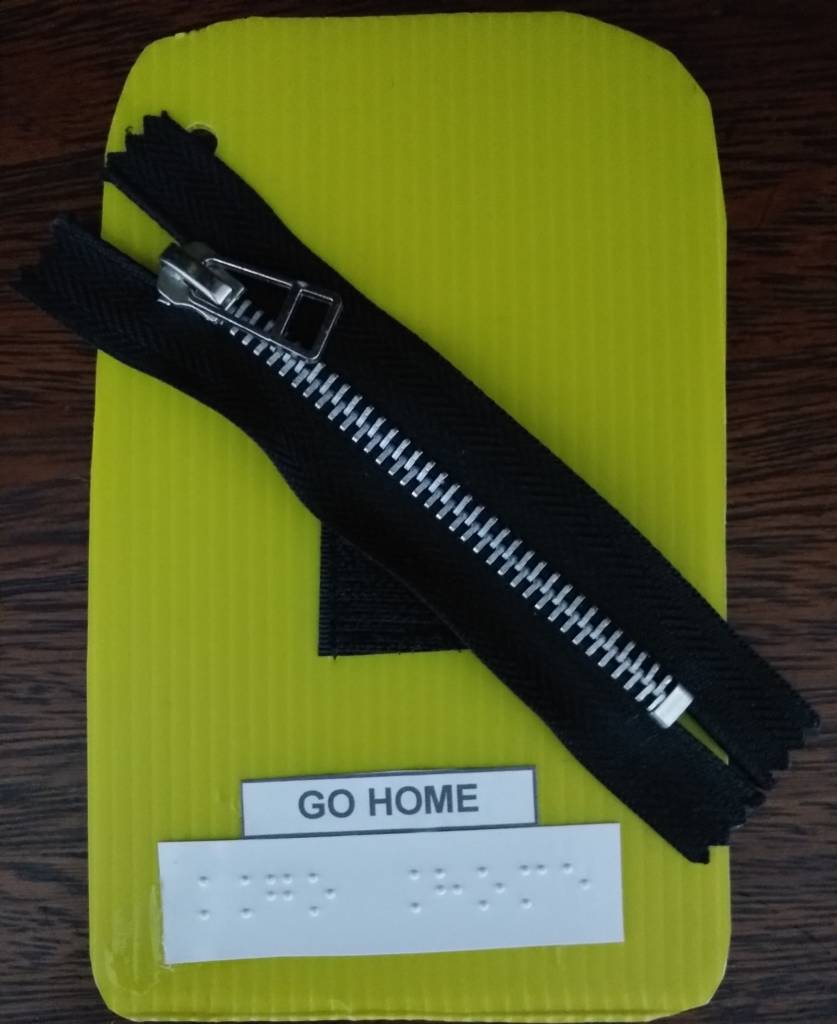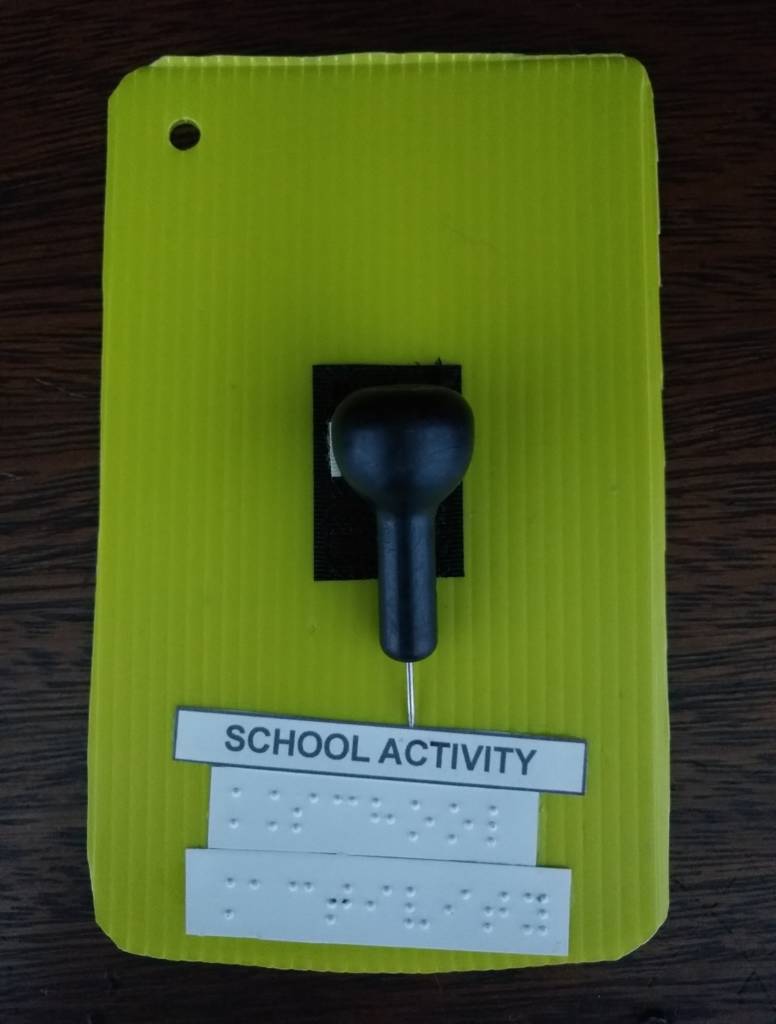Hi, I’m Flavia Moreira. I am a teacher of students with multiple disabilities and visual
impairments at Instituto Benjamin Constant, a public school specializing in the care of
people with visual impairments. Over the years, the profile of students has changed a lot
and we started to serve students with multiple disabilities and visual impairments and
complex communication needs.
I wrote this text to share with other teachers a suggestion for a key chain of reference
objects referring to daily routine actions and the concrete symbols of yes and no. But
first, let’s better understand the terms multiple disabilities and visual impairments and
complex communication needs.
Multiple disabilities and visual impairments is a largely heterogeneous condition.
Additional disabilities often include intellectual disability, physical disability, and
cerebral palsy, in addition to learning disabilities, syndromes, pervasive developmental
disorders, poor health conditions, and complex communication needs (Chen, 1995).
Students with complex communication needs may not have sufficient communication
skills to meet their needs. For some it is a temporary condition, for others it may be a
permanent condition (Goldbart; Caton, 2010). These students can communicate through
informal and idiosyncratic modalities, such as the use of gestures, verbalizations,
vocalizations, facial expressions and unusual ways to answer yes and no.
Many of these students face daily challenges in expressing needs and interests and,
because of limited access to information, are not motivated to explore, initiate
interactions, or actively participate in everyday situations (Chen, 1995). As a result,
expectations for these children and young people are also reduced and, consequently,
they become more dependent on others and get used to receiving everything ready,
without having options for choices and without adequately understanding the meaning
of objects and activities of the surrounding environment (Chen, 1995).
The main objective of educational programs should be to encourage the development of
communication skills, through tactile resources of alternative communication, such as
reference objects.
According to Ockelford (2002), reference objects are those that receive special
meanings related to them. A single activity may involve the use of many elements,
however, a single object serves to represent and anticipate the occurrence of a given
activity. For example, the action of eating involves concrete items such as cutlery,
utensils, food, furniture. It involves arbitrary items such as words and triggers other
senses besides touch, such as smell, taste and hearing.
Reference objects can represent different concepts and serve the purposes of receptive
and expressive communication, favoring the manifestation of yes and no answers,
offering options for choices and allowing children and young people to understand, in a
meaningful way, the activities of their daily routine.
As I explained before, in this text I share a routine key chain with reference objects, the
concrete yes and no symbols in large size and a key chain with the concrete yes and no
symbols in reduced size. These resources were prepared by me and are being used by
students with multiple disabilities and visual impairments and complex communication
needs during the individual sessions of Alternative Communication at the Benjamin
Constant Institute.

Image Description: Color image. Under a wooden background, reference objects key chain
made with six yellow plastic cards held together by a ring. Two cards appear in the image: the
first card has a red plastic cup and a blue plastic spoon fastened with Velcro. Below these
objects, there are captions in ink and in Braille “eat/drink.” On the second card is a small blue
pillow. Below this object is an ink and braille caption “to sleep.” End of description.
Next, the key fob cards can be viewed individually.







These resources were made with low-cost materials and therefore can be replicated by
other teachers, paraprofessionals and researchers who serve students with multiple
disabilities and visual impairments.
Those interested in replicating these resources should consider that before nailing
objects to routine key ring cards, they should be incidentally explored by students during
play to assign meanings to each object within a specific context. Concrete yes and no
symbols should be used to contextualize student preferences and rejections.
It is during daily experiences that our students are able to establish relationships
between objects and their referents.

References
CHEN, D. Who are Young children whose multiple disabilities include visual impairment?
In: CHEN, D.; DOTE-KWAN, J. Starting points: instructional practices for Young children whose
multiple disabilities include visual impairment. Los Angeles, CA: Blind Childrens, 12-23, 1995.
Available in: https://files.eric.ed.gov/fulltext/ED404839.pdf
GOLDBART, J.; CATON, S. Communication and people with the most complex needs: what works and why this is essential. Manchester Metropolitan University (MMU): Research Institute for Health and Social Change, 2010. Available in: https://e-space.mmu.ac.uk/198309/1/Mencap%20Comms_guide_dec_10.pdf
OCKELFORD, A. Objects of reference: promoting early symbolic communication. 3rd.
edition. Bibliogaphy by Keith Park. Royal National Institute for the Blind, 2002.




